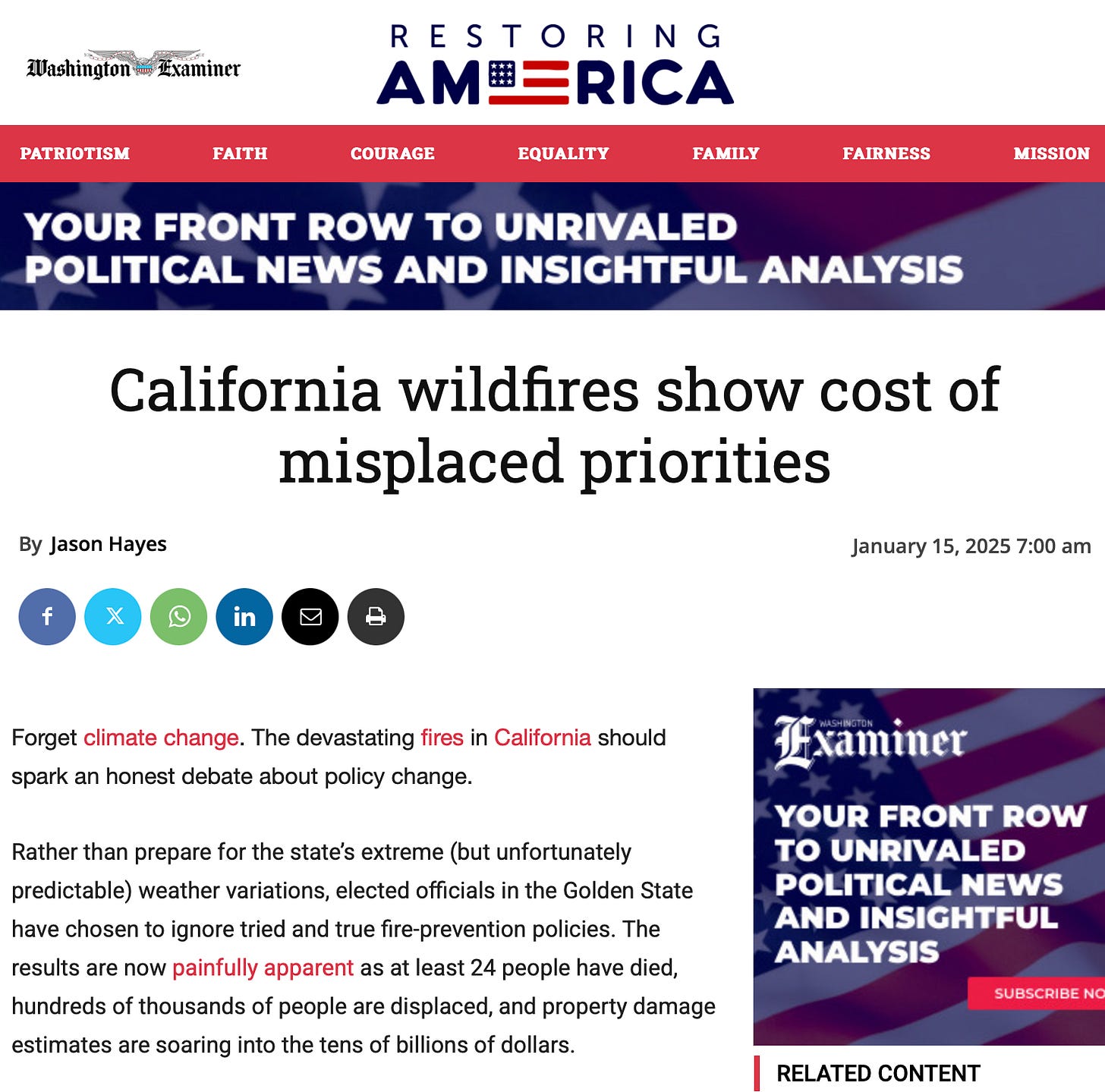California wildfires show cost of misplaced priorities
My latest editorial describes how misplaced priorities are the true drivers of California's wildfires
Rather than prepare for the state’s extreme weather variations, elected officials in the Golden State have chosen to ignore tried and true fire-prevention policies.
My most recent editorial went live on the Washington Examiner this morning.
With thanks to researchers like
and , for their work on balancing the discussion on climate and natural areas management. If you have not already subscribed to their Substack pages, you should.California wildfires show cost of misplaced priorities
Forget climate change. The devastating fires in California should spark an honest debate about policy change.
Rather than prepare for the state’s extreme (but unfortunately predictable) weather variations, elected officials in the Golden State have chosen to ignore tried and true fire-prevention policies. The results are now painfully apparent as at least 24 people have died, hundreds of thousands of people are displaced, and property damage estimates are soaring into the tens of billions of dollars.
“Extreme but predictable weather variations” isn’t the message you hear in the media. Instead, many assert that the fires in Los Angeles are directly attributed to climate change. To choose just one high-profile example: CNN’s Brianna Keilar interviewed the famous climate scientist Michael Mann, who argued that these fires are “definitely related to a trend of drier conditions in California and the western U.S. caused by human-caused warming, due primarily to the burning of fossil fuels.”
It’s an easy-to-believe narrative, but it’s also false. Weather and climate are very different, as climate scientists like to say, and the weather affecting California fits with the historical pattern — regardless of changes in the climate. The U.S. Drought Monitor shows that California has experienced extreme weather — droughts followed by deluges — for millennia.
In fact, the last century gave California some droughts more intense than the current one, as Roger Pielke, formerly of the University of Colorado Boulder, pointed out. Similarly, the strong Santa Ana winds stoking the current fires “aren’t unusual,” former assistant professor at the University of Alabama’s Department of Geological Sciences Matthew Wielicki explained in a social media post. California has had wildfires throughout its recorded history, as the enabling conditions keep coming back.
…
This piece is also behind a paywall, but I can at least give Forest, Fuels, and Freedom readers a taste of what I wrote. Washington Examiner subscribers can access the remainder online.





Great article and information, I did follow both of your recommendations, thank you!